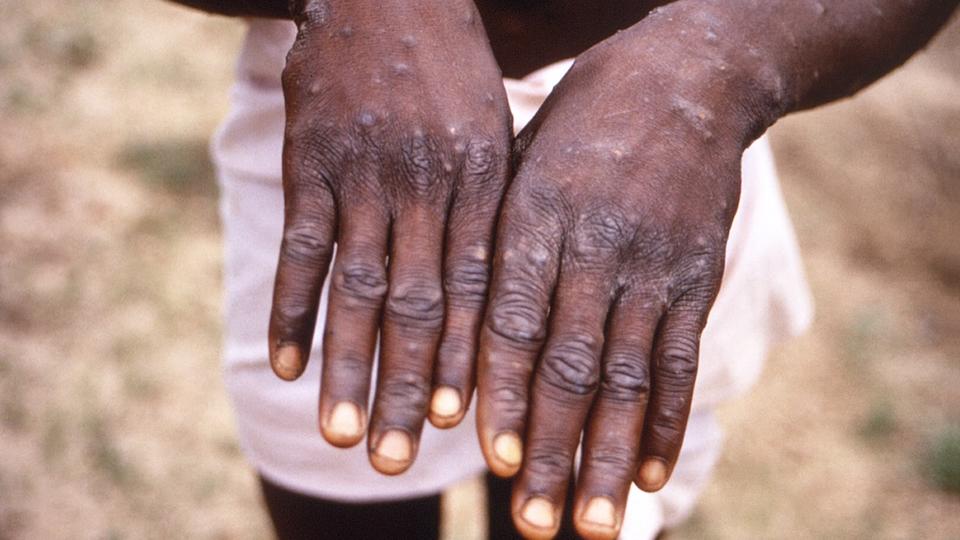While monkeypox continues to spread in France and in several European countries, we now know a little more about the duration of this disease and its mode of transmission.
Monkeypox is starting to cause concern. More than 200 infections with this type of smallpox have been confirmed in several European countries, including Spain, Portugal and France where at least 7 « proven » cases have been recorded, according to a latest count available on Friday.
In turn, the European Union is preparing group purchases of vaccines against this type of smallpox.
But if the extension of this disease, hitherto confined to Africa, begins to agitate the spirits, the first health measures start, just like research on its mode of transmission.
An incubation period of 5 to 21 days
In a press release, the Directorate General of Health (DGS) describes monkey pox as an “unusual phenomenon”. Unlike Covid-19, where the incubation period is five days, that of monkey pox can range from five to twenty-one days, according to initial analyses.
“The infection begins with fever, headache, muscle pain and fatigue. The disease also causes lymph nodes. The adenopathies (neck, face…) are voluminous. The person is contagious as soon as the first symptoms appear, ”explains the DGS.
After the appearance of the so-called « visible » symptoms, pimples and pustules also appear in the days that follow.
“Within one to three days (sometimes longer) of the onset of fever, the patient develops a rash, which often begins on the face and then can spread to other parts of the body, including the palms of the hands. , the soles of the feet and the genitals (…) Skin involvement occurs in a single push.
The lesions go through different successive stages (macule, papule, vesicle, pustule then crust), and evolve in a uniform way”, indicates the DGS in its press release. At the end of this period, the scabs fall off, marking the end of the patient’s contagiousness. Typically, monkeypox lasts two to three weeks.
Transmission by several means
Monkeypox, also called Monkeypox, can be transmitted by different methods. Indeed, the transmission occurs, first, when a person comes into contact with an animal (rodents in particular).
“The virus enters the body through a lesion of the skin (even not visible), the respiratory tract or the mucous membranes. Transmission from animals to humans can occur by biting or scratching, by preparing bushmeat, by direct or indirect contact with bodily fluids or lesion material”, develops the General Directorate of Health.
However, the virus can also be transmitted by a human being or contaminated materials through respiratory droplets after prolonged face-to-face contact with the infected person. Droplets generally cannot travel more than a few meters.
“Other modes of human-to-human transmission include direct skin contact with body fluids or the lesion, and indirect contact with the lesion, for example through contaminated clothing, linens or dishes,” she adds. .
This Thursday, May 26, the spokesperson for the European Commission for health matters, Stefan De Keersmaecker, specified that the European body HERA (Health Emergency Response Authority) “is working with Member States and manufacturers to obtain vaccines and treatments for monkeypox”.


![L'épidémiologiste Martin Blachier exprime son incompréhension face à la montée de cas de variole du singe.[Capture d'écran CNEWS]](https://static.cnews.fr/sites/default/files/styles/image_375_210/public/martin_blachier_il_y_a_un_phenomene_nouveau_cest_lemergence_de_plein_de_foyers_de_ce_virus_dans_plein_de_pays_du_nord_de_leurope_ou_des_etatsunis_cest_bizarre_on_ne_comprend_pas_628f2511e20b7_0.jpg?itok=b-RKFcnF)
![La nouvelle ministre de la Santé, Brigitte Bourguignon, se veut rassurante au sujet des vaccins contre la variole du singe. [LUDOVIC MARIN / AFP]](https://static.cnews.fr/sites/default/files/styles/image_375_210/public/000_32au43p-taille1200_628dfb3b7536a.jpg?itok=gpG__-MP)